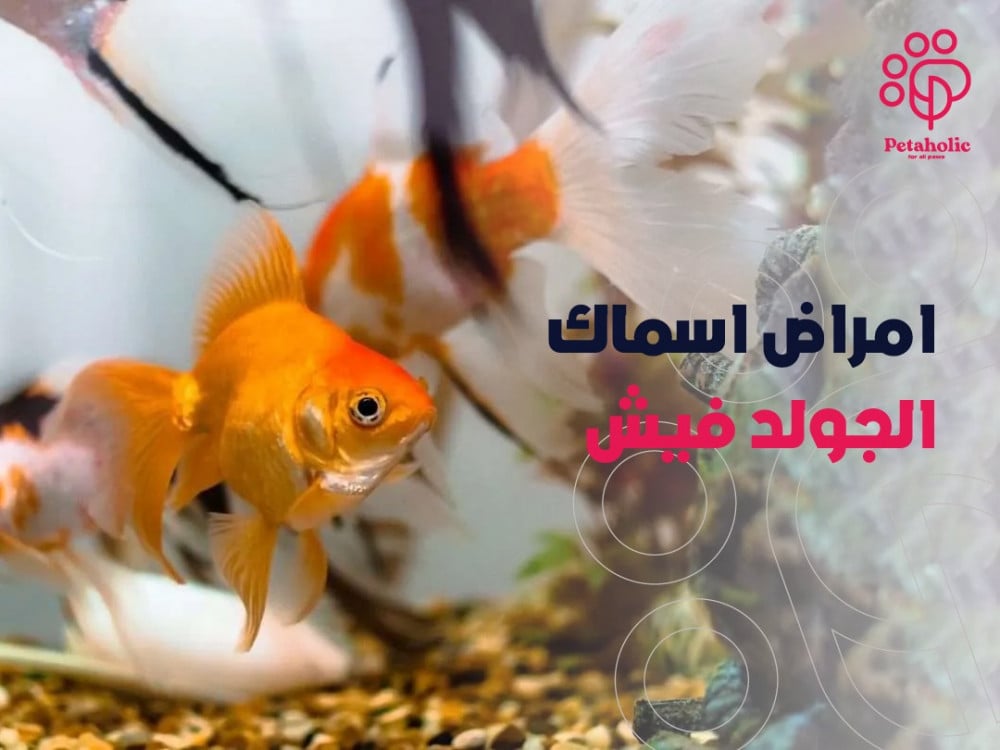
Are you a goldfish owner and have some doubts about its health? This article will answer all your questions about common goldfish diseases. You will also learn how to get the appropriate diagnosis and treatment for your beloved golden friend without spending a lot on veterinary clinics if it is not necessary. This article is for you, even if you have a very healthy Goldfish and are just wondering how to keep it that way. At Petaholic you will also find all the fish supplies that ensure you keep your fish healthy.
What are the most common diseases of goldfish?
The most common diseases of goldfish are the following:
Dropsy
Ascites is a collection of fluid accumulated in the internal organs, and is caused by the accumulation of waste from the kidneys. However, ascites is not the actual disease. A common symptom of ascites is abdominal swelling. If you see a distended abdomen in your fish, there is a 90% chance of kidney failure. The phenomenon that causes dropsy is called Aeromonas, which is a bacterial infection that only occurs when the fish's body is stressed or weakened. This disease can cause poor water quality, high ammonia and nitrite levels, among other problems in your aquarium.
If your goldfish has already developed dropsy, you can start treating it by placing it in an isolated tank. This aquarium does not need to be well equipped, with the only basic needs being filters and basic aerators. After that, you should start medicated feedings for her, and try antibiotics at first.
Neurofibromatosis
Neurofibromatosis is a common tumor associated with goldfish. This type of tumor causes localized lumps of skin and fins that grow large, fall off, and then grow again. Neurofibromatosis is a benign tumor that does not cause any harm or distress to your goldfish. The most effective way to remove a deep tumor from your fish is to remove it surgically under anesthesia, which is the treatment that has the greatest success rate. There is also a treatment that uses medications, but it is not recommended due to its low success rate and possibly harmful side effects.
Neurofibromatosis, like any other tumor, is caused by excessive cell proliferation. However, instead of killing the fouled cell, the fish's natural defense allows it to reproduce. Therefore, the tumor forms in the fish's skin or fin. Unfortunately, there is no way to prevent a tumor in your goldfish; Because it is a hereditary disease. However, good water quality and food are a good starting point for prevention. You can also monitor your goldfish daily and contact your vet if you feel something is wrong.
Trypanosomiasis (fluke)
Trypanosomiasis, also known as fluke disease, is a type of parasitic infection that attacks both the body and gills of goldfish. They can occur if the fish have a poor diet or if the water quality is not very high. Both body flocs and gills pose a great danger to the fish. If not treated, it will kill the fish and infect the rest of the tank.
You can usually tell if your goldfish has fluke if you see it scratching its back against glass, breathing rapidly, and has mucus on its gills and body. Her skin may also turn red, and her tummy may twitch. The most difficult part of treating this disease is making the correct diagnosis. Without a microscope, the gills are practically undetectable. Therefore, other, more common goldfish diseases must be eliminated for Fluke treatment to be successful.
To prevent this disease from appearing in your aquarium, isolate each new fish before placing it with others; Because it will quickly infect other fish if you don't isolate it first. Once you are sure the new fish is clean, you can add it to the tank with the rest.
Clawworm
Clawworms get their name because of the shape of their heads, as they burrow their heads into the bodies of fish and feed on their blood. Clawworm is not a disease. Instead, it is a goldfish parasite usually located near the pectoral or dorsal fin. The most common way your fish can become infected with clawworm is from another fish. So if you want to prevent the infection from spreading throughout the entire tank, inspect the new fish closely before placing it with other fish and isolating it until you are sure it is not carrying the infection.
The easiest way to control these parasites in your goldfish tank is to pick them out with tweezers. However, be careful if the worm is near the fish's eye. Next, place the fish in a mild salt bath to combat any infections in the new wounds. After putting them in the bathroom, you will have to use a disinfectant solution to kill the remaining parasites, but the worm eggs will survive. Therefore, you will need to complete the treatment after another seven days to kill all the eggs.
Fish lice is one of the most prominent diseases of goldfish
Goldfish lice can reach 3 to 4 mm when fully grown, and are actually crustaceans. Severe lice infestation is an extremely common disease in goldfish. If not treated properly, it can lead to massive blood loss and even death. The most common sign of infestation is when you see your fish rubbing itself against any objects available in the tank. Such behavior can lead to loss of scales and injury to the fins of the fish. Lice can enter the tank from any new fish you introduce to your tank. However, plants and other objects brought from the wild and placed in the aquarium without proper sterilization can lead to fish lice infestation.
The tank must be sterilized for the best treatment to remove all parasites from the fish's skin. Next, you need to introduce the fish into another aquarium and fix the large aquarium with a fungicide. While the pesticide is doing its work, you also need to kill all the parasites that remain on your fish. Put your goldfish in a quick salt bath, and then it will be ready for the aquarium.
To keep your aquarium clean at all times and prevent any diseases that may affect the fish, we recommend purchasing:
How do you know if your goldfish is sick?
If your fish is eating, swimming and behaving normally, there is no need to worry. However, keep these signs in mind if your fish is not eating its food, gasping for air, or randomly scratching its fins. Signs vary depending on situations and other diseases. You can notice some goldfish diseases with your eyes only, such as tumors, ulcers, and even parasites. However, there are internal problems that you cannot see, which is why it is necessary to take care of your fish and monitor every little detail.
You can also check the water quality to determine if your goldfish is sick. Poor water quality can cause the majority of the diseases mentioned above. Therefore, if the water in the tank does not look good, there is a high possibility that your fish will get sick. That's why you should have your water tested at least once a month to make sure there's no ammonia, nitrates, and no chemicals that can be harmful to your fish's health.
Among our distinctive products that we recommend to prevent your fish from contracting any diseases due to aquarium and water pollution:
Thus, the above diseases are the most common among goldfish, and their treatment is not very complicated. The key is to make the diagnosis quickly and correctly as you learned with us. But to avoid infecting your fish with these diseases from the beginning, you must provide clean water, a clean, complete tank, and proper and healthy nutrition. Fortunately, you can save all of that thanks to our products at Petaholic at affordable prices.
Read also:-
- What are the basics of caring for an ornamental fish tank?
- The most beautiful types of ornamental fish suitable for breeding

